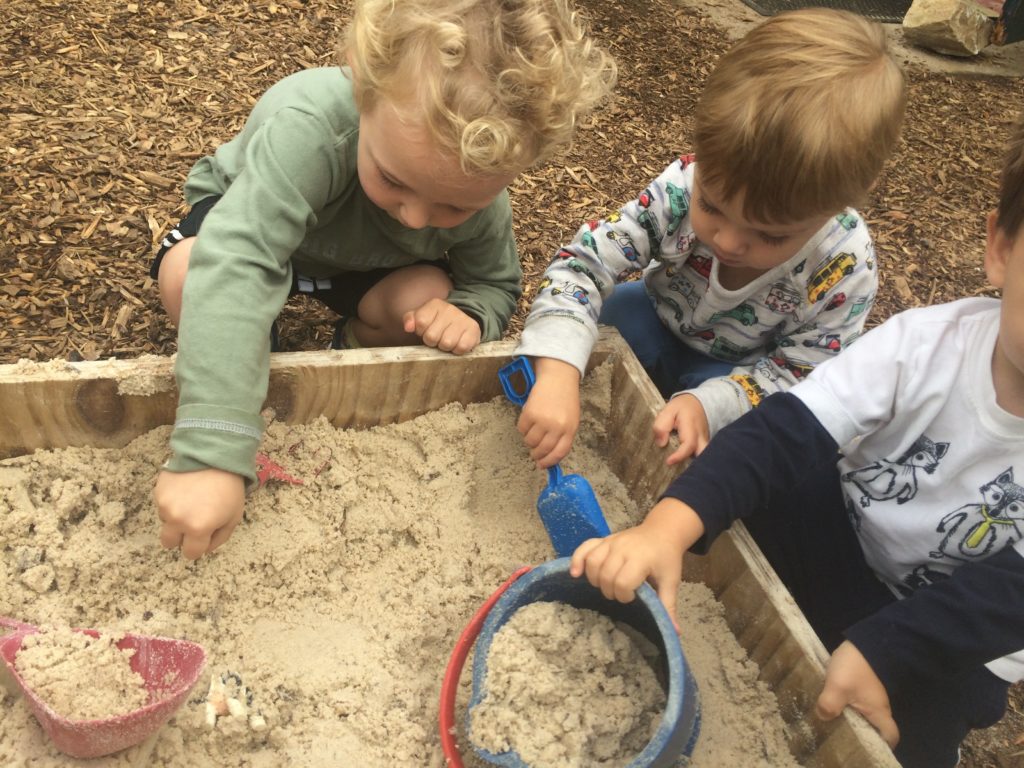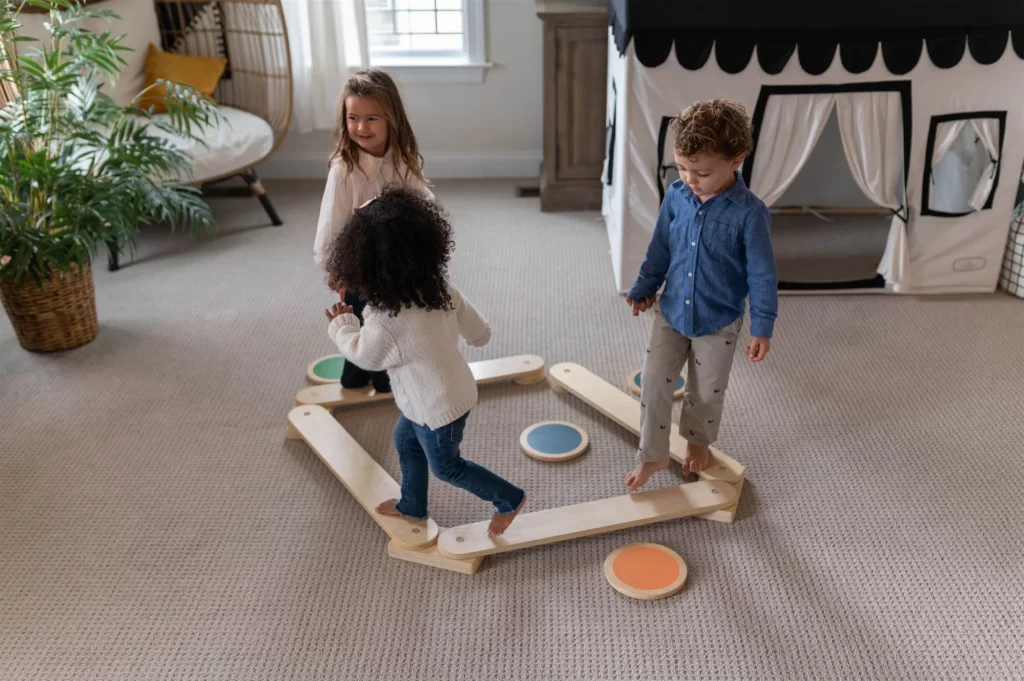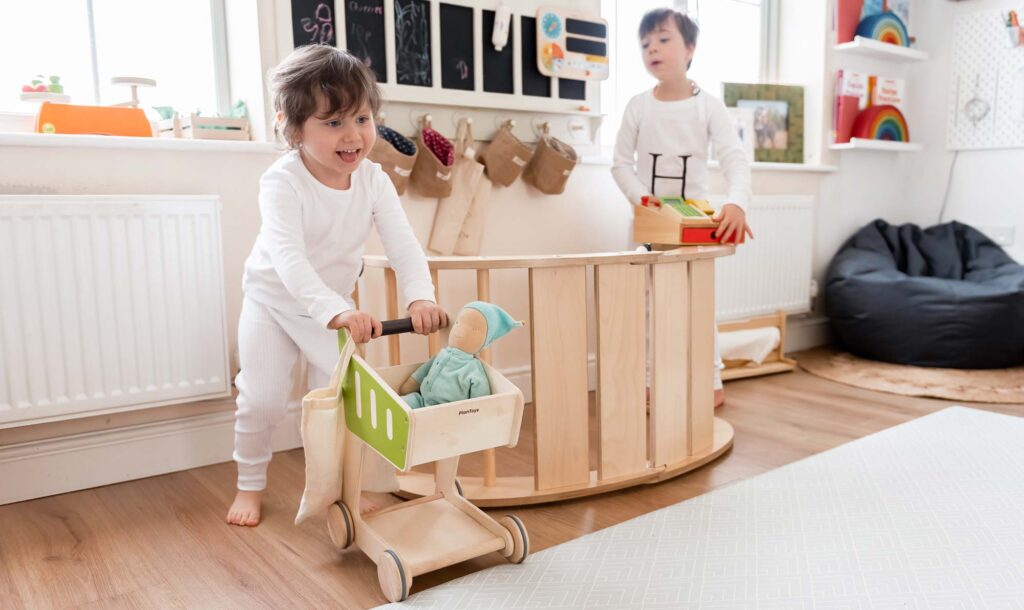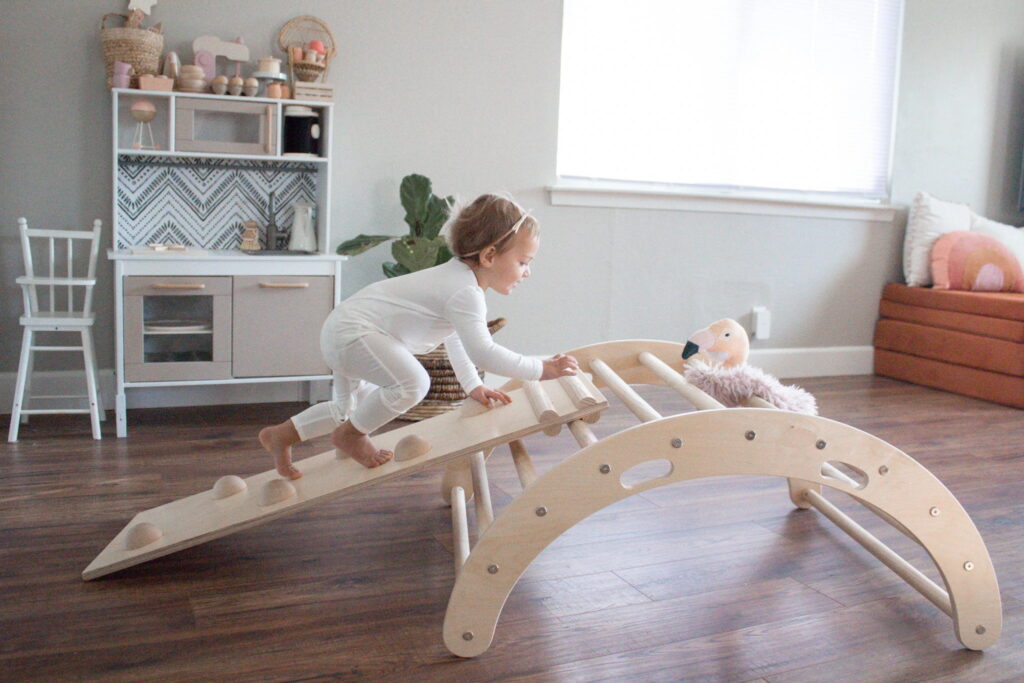Physical activity is important at all ages. But when it comes to infants and young children, it’s essential for the development of both body and brain.
What are the main ways that physical activity benefits young children?
Children are developing physically, cognitively, and emotionally, and active movement helps them to grow their skills in all three areas.
Physical activity improves overall physical fitness. By being active, youngsters develop cardiovascular endurance, flexibility, muscular strength, and muscular endurance all the while promoting agility and developing balance. Using the large muscles of the arms, legs, and trunk by crawling, running, and jumping, children hone ‘whole body movement’ skills which develop gross motor skills in a way like no other.
Physical activity also teaches children how to receive, interpret and respond successfully to sensory information. It increases overall coordination including, hand-eye coordination and eye-foot coordination: It also improves spatial awareness.
While you might not think keeping active helps children develop socially, physical exercise helps children acquire the skills that enable them to react and interact with others, and develops teamwork skills and cooperation. If there are more than two people in any situation, they must learn to work together rather than against each other and play just for the fun of it.
Another great thing about physical activity is that it promotes confidence and satisfaction or pride in oneself while they’re having fun – but it must remain fun. Exercise should never become a chore otherwise; kids just won’t be interested anymore…

How active should young children be?
The Department of Health’s Physical Activity and Sedentary Behaviour Guidelines are a helpful reference for parents and care-givers.
The Government recommends these physical activity levels for healthy growth and development in young children:
- Babies (from newborn to 12 months) should have supervised, interactive, floor-based play in safe environments from birth. Before they can move around on their own, infants should have 30 minutes of tummy time, with reaching, grasping, pushing and pulling. Once they’re mobile, crawling is encouraged throughout the day.
- Toddlers (aged one to two years) should spend at least 180 minutes, or three hours a day doing different physical activities, including high-energy play, such as jumping, running and twirling.
- Preschoolers (aged three to five years) should spend at least 180 minutes a day in a variety of physical activities, with 60 minutes of this time spent on energetic play, like kicking, throwing, running and jumping, spread over the day.
For toddlers and preschoolers, ‘more is better’ when it comes to physical activity. As young children grow into school kids, ages five to 12 should be getting at least 60 minutes of ‘moderate to vigorous intensity’ physical activity each day to reap the health benefits.
Again, more is better, and school children get added health benefits when they engage in more activity (up to several hours a day).

As well as encouraging physical fitness, how can we help children to ‘train their brain’?
Whether they’re struggling with separation anxiety at child care or winding down after a big day, breathing exercises are a great way to help children handle stress more effectively and promote better health and well-being.
One fun pre-bedtime activity (thanks to Bloom Child Psychology) is for everyone to lie on their back with a favourite toy resting on their tummy. The aim is to slowly raise the object as you’re breathing in, hold it for a few seconds, and then lower the object slowly as you breathe out.
You can introduce counting – breathing in to the count of four, holding for a count of four and breathing out to the count of seven – and repeat this three or four times to relax before bed.
What advice would you give parents who are worried about their child’s approach to physical activity and/or diet?
It’s important that we don’t put needless pressure on our children in regard to body type or food choices. We are still their biggest influence, and they are constantly watching us and observing to learn about what it means to be healthy.
So, the best thing we can do as parents is to be the best and healthiest version of ourselves. By making time for our own exercise, making healthy food choices and demonstrating a positive attitude to our own body shape, we have a huge impact on our children. Although this is not always easy, it is truly the most effective and powerful road to take.
So, my advice to other mums is to:
- Make the time to be physically active, with both ‘Mum-time’ and family activities
- Set achievable goals to spur you on
- Don’t let your mind talk you out of physical activity – just go for it!
- And listen to your body – if you feel run down, then rest

All in all, physical activity benefits humans at every age, so take a deep breath and focus on fun and fitness for your whole family.
Physical activity is important at all ages. But when it comes to infants and young children, it’s essential for the development of both body and brain!


